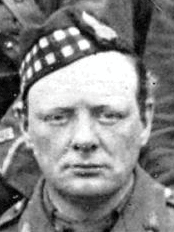Related Research Articles
An electoral alliance is an association of political parties or individuals that exists solely to stand in elections.

The 1918 United Kingdom general election was called immediately after the Armistice with Germany which ended the First World War, and was held on Saturday, 14 December 1918. The governing coalition, under Prime Minister David Lloyd George, sent letters of endorsement to candidates who supported the coalition government. These were nicknamed "Coalition Coupons", and led to the election being known as the "coupon election". The result was a massive landslide in favour of the coalition, comprising primarily the Conservatives and Coalition Liberals, with massive losses for Liberals who were not endorsed. Nearly all the Liberal MPs without coupons were defeated, including party leader H. H. Asquith.
The 1943 Buckingham by-election was a parliamentary by-election held on 4 August 1943 for the House of Commons constituency of Buckingham in Buckinghamshire.
The 1943 Darwen by-election was a by-election held on 15 December 1943 for the British House of Commons constituency of Darwen in Lancashire.

The 1943 Chippenham by-election was a parliamentary by-election held in England on 24 August 1943 for the British House of Commons constituency of Chippenham in Wiltshire.
The 1945 Caernarvon Boroughs by-election was a parliamentary by-election held on 26 April 1945 for the British House of Commons constituency of Caernarvon Boroughs.
The 1942 Cardiff East by-election was a parliamentary by-election held for the British House of Commons constituency of Cardiff East on 13 April 1942.

The 1945 Chelmsford by-election was a parliamentary by-election for the British House of Commons constituency of Chelmsford, Essex on 26 April 1945.
The 1918 Wansbeck by-election was a parliamentary by-election held for the House of Commons constituency of Wansbeck in Northumberland on 28 May 1918.
The 1915 Merthyr Tydfil by-election was a parliamentary by-election held on 25 November 1915 for the British House of Commons constituency of Merthyr Tydfil in Glamorganshire, Wales.
The 1917 Islington East by-election was a parliamentary by-election for the British House of Commons constituency of Islington East held on 23 October 1917.

The 1917 Dundee by-election was a parliamentary by-election for the British House of Commons constituency of Dundee in the county of Angus held on 30 July 1917.
The 1917 Edinburgh South by-election was a parliamentary by-election held for the House of Commons constituency of Edinburgh South in Scotland on 12 May 1917.
The 1916 Derby by-election was a parliamentary by-election held for the House of Commons constituency of Derby, the county town of Derbyshire on 29 December 1916.

The 1944 Bury St Edmunds by-election was a parliamentary by-election for the British House of Commons constituency of Bury St Edmunds, Suffolk on 29 February 1944.
The 1941 Lancaster by-election was a parliamentary by-election for the British House of Commons constituency of Lancaster, Lancashire on 15 October 1941.
The 1943 Daventry by-election was a parliamentary by-election for the British House of Commons constituency of Daventry, Northamptonshire, on 20 April 1943.
The 1944 Skipton by-election was a parliamentary by-election for the British House of Commons constituency of Skipton, Yorkshire held on 7 January 1944.
The 1918 Gravesend by-election was a Parliamentary by-election held on 7 June 1918. The constituency returned one Member of Parliament (MP) to the House of Commons of the United Kingdom, elected by the first past the post voting system.

In British politics, a Lib–Con pact is a working arrangement between the Liberal Party and the Conservatives.
References
- ↑ Page xv, British Parliamentary Election Results 1885-1918, FWS Craig